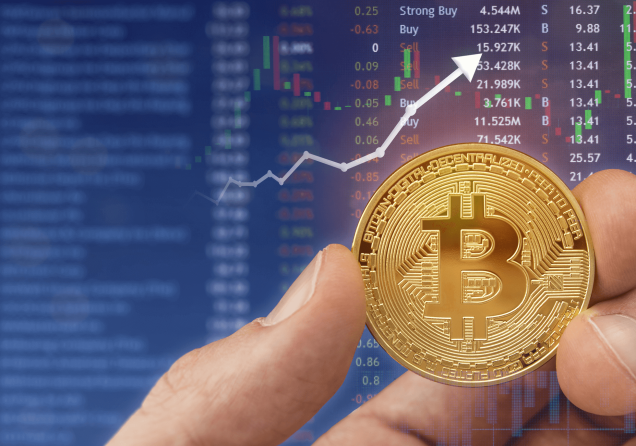What Determines The Price of a Cryptocurrency?
News | October 20, 2022, 8:00 PM | The content is supplied by a Guest author
Introduction
Over the last 12 years, cryptocurrencies have risen from a niche asset class to being recognized by millions of investors around the world. These investors are drawn to the asset class because of a variety of reasons, including the utility they offer and the chance to net impressive returns. Apart from the feature of decentralization, cryptocurrencies are distinguishable from other assets by their prices. Crypto prices are susceptible to pretty wild swings within a short window, which has both fascinated and deterred different types of investors.
Bitcoin reached a peak of $64,789 and six months later, the asset had hit rock bottom prices of less than $20,000. Ethereum (ETH), Shiba Inu (SHIB), and Dogecoin (DOGE) also recorded triple-digit games within months, piquing the interest of outsiders regarding the astronomical gains.
While it may seem like crypto prices have a mind of their own, the reality is that the prices are influenced by a combination of factors. Regardless of these factors, traders can still closely monitor their crypto and DeFi holdings across different platforms through CoinStats, an intuitive crypto portfolio manager. You can track your holdings with CoinStats coin price tracker, calculate your previous and upcoming profits via profit/loss calculator, track NFTs and swap 1 coin to another within seconds. Its news aggregator is a nifty tool to navigate uncertain crypto waters and predict price changes.

This article will do a deep dive into the factors that determine crypto prices including supply and demand, competition, and whale activity, among others.
1. Adoption of the Crypto
The number of users of a crypto project generally affects the price of the asset. Mass adoption from both retail and institutional investors can send prices to the moon while a flight of capital from projects can trigger low prices for the asset.
Blockchain projects can trigger adoption by unveiling real-world uses for their networks. For example, the number of Bitcoin addresses has been on a steady increase since 2009 and reached peak levels of over 40 million. The use of Bitcoin as a store of value and as a means of settling transactions led to an increase in the network’s adoption. In terms of pricing, a correlation can be identified between the increase in Bitcoin’s price and the increase in addresses.
Conversely, a decline in adoption would lead to low asset prices. The delisting of some privacy coins by crypto exchanges had an adverse effect on the prices while assets like Litecoin (LTC) have fallen down the pecking order as the number of users hit a plateau.
2. Supply and Demand
The factors of supply and demand are integral elements in the determination of the price of a cryptocurrency. This factor is given prominence over others as cryptocurrencies have no regulating central body in charge of price control. The greater the demand for a crypto asset, the higher its value will be. On the flip side, when the supply of a cryptocurrency is higher than demand, it will not be out of place to see dwindling prices.
Several crypto projects have devised ways to control the market forces of supply and demand. Networks like Bitcoin and Litecoin have adopted a hard cap to serve as a deflationary strategy with Bitcoin going a step further to reduce the amount of mined BTC in each block by half every four years. Other networks employ the deflationary tactics of burning tokens to reduce supply. Burning has been employed by Shiba Inu, BNB, Baby Doge, and other crypto networks.
3. Competition
Aside from the factors of demand and supply, the activities of other blockchains can affect asset prices. Blockchains are a novel technology and are evolving every day with new features being unveiled in an attempt to solve the problems of scalability, decentralization, speed, and security.
In the event that a new blockchain makes giant strides in scalability while offering lower transaction costs at great speeds, the odds of the native token’s price soaring are extremely high. Competing assets may record a decline in prices as investors turn their attention to the new crypto asset.
A keen example of this is the trio of Cardano (ADA), Solana (SOL), and Polkadot (DOT) taking off pieces of ETH’s market share because of their offerings as being faster and more scalable. Terra (LUNA) and Avalanche (AAVE) saw their fortunes rise while other assets took a hit as the competition between blockchains stiffened.
4. Regulation
Government policy and crypto price are like two peas in a pod. The actions of lawmakers or other regulators have an impact on crypto prices as they can sway investor sentiments with the stroke of a pen. In 2021, China launched a major crackdown on cryptocurrencies that brought cryptocurrency activity to a grinding halt in the country. Miners migrated to new jurisdictions and within days of the announcement, prices of cryptocurrencies began to fall.

Positive actions from regulators will have positive effects on prices like the SEC’s decision to approve a futures Bitcoin ETF in October 2021 which sent Bitcoin’s price to new highs. El Salvador’s adoption of Bitcoin as legal tender was also a catalyst leading up to the November all-time high for the asset.
5. Whale Activity
Retail investors often pay rapt attention to the actions of whales in crypto they are interested in. These whales are entities holding significant portions of the assets and their actions have enormous consequences on prices.
Whales affect crypto prices by either buying or selling large amounts of assets. In the case of a sale, the large transaction size creates pressure as other market participants may interpret the move as a signal for mass dumping. Conversely, when there is an increase in buying activity amongst whales, the pundits take it as a sign of impending bullishness.
Conclusion
So, there you have it! The multiple factors that affect crypto prices in the markets today. As a recap, these factors include the activity of whales, government regulations, competing blockchains, demand and supply, and the adoption rate of the asset. There’s certainly a method to the madness of cryptocurrency’s volatility and an understanding of the factors behind the swings would certainly take your investment game to the next level.
Regulated Brokers
The table below contains links to 3rd party websites of our top partners from whom we receive compensation at no additional cost to you.













